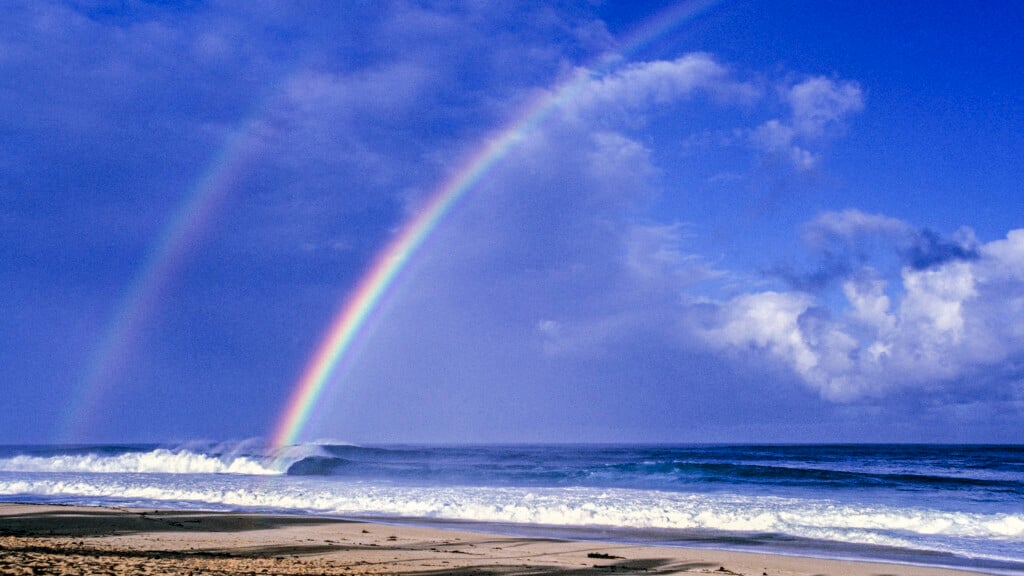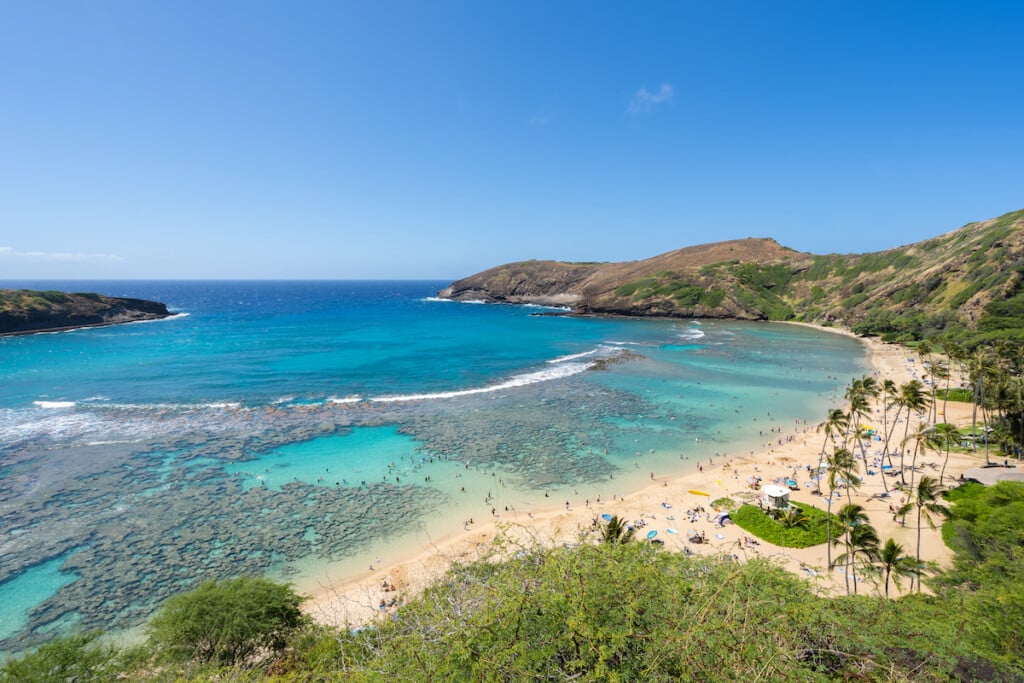Get Snorkel and Ocean Safety Tips from a Hawaiʻi Boat Captain and Crew
Your beginner’s guide to snorkeling in Hawaiʻi.
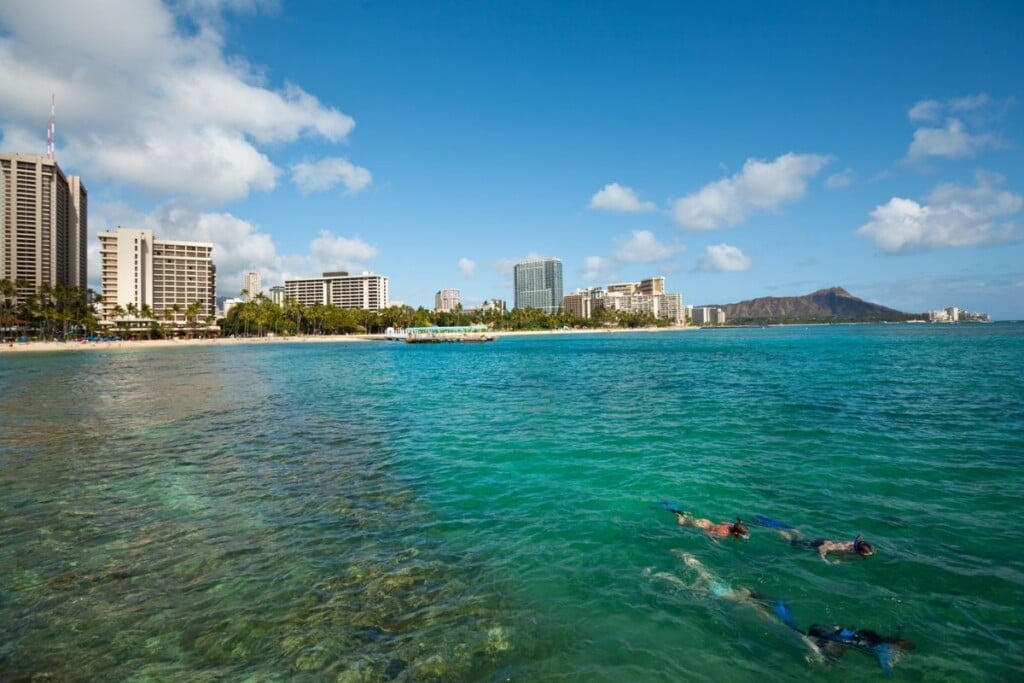
Hawai‘i’s vibrant and extensive reef systems, unique marine life and year-round warm waters make for exceptional snorkeling. Beneath the ocean’s surface, you’ll see colorful schools of fish and vibrant coral reefs and maybe even a honu (Hawaiian green sea turtle) or two leisurely swimming by. For them, getting around in the ocean is effortless; for the rest of us, though—especially those unaccustomed to swimming in the unpredictable ocean—it can be a challenge.
Hopping off a tour boat into the sea for the first time can be overwhelming—and for some, just entering from the beach is a big deal. And then there’s the actual snorkeling: You breathe through your snorkel tube and kick with your fins, hoping your mask doesn’t fog up while you adjust to the undulating movement of the ocean. It can be arduous at first, but the payoff is worth it. From Molokini off the coast of Maui to Mākua (aka Tunnels) on Kauaʻi and Shark’s Cove on Oʻahu, the Islands are home to incredible reef systems that make for astounding snorkel experiences. So, to make sure your first (or fifth) snorkel adventure goes swimmingly, HAWAIʻI Magazine asked the experts for advice. Capt. Ryan Gallagher and his crew at Holokai Catamaran, who operate a popular snorkel tour that takes passengers from Waikīkī to Turtle Canyon, offer tips for beginner snorkeling in Hawaiʻi.
1. Know your swimming abilities
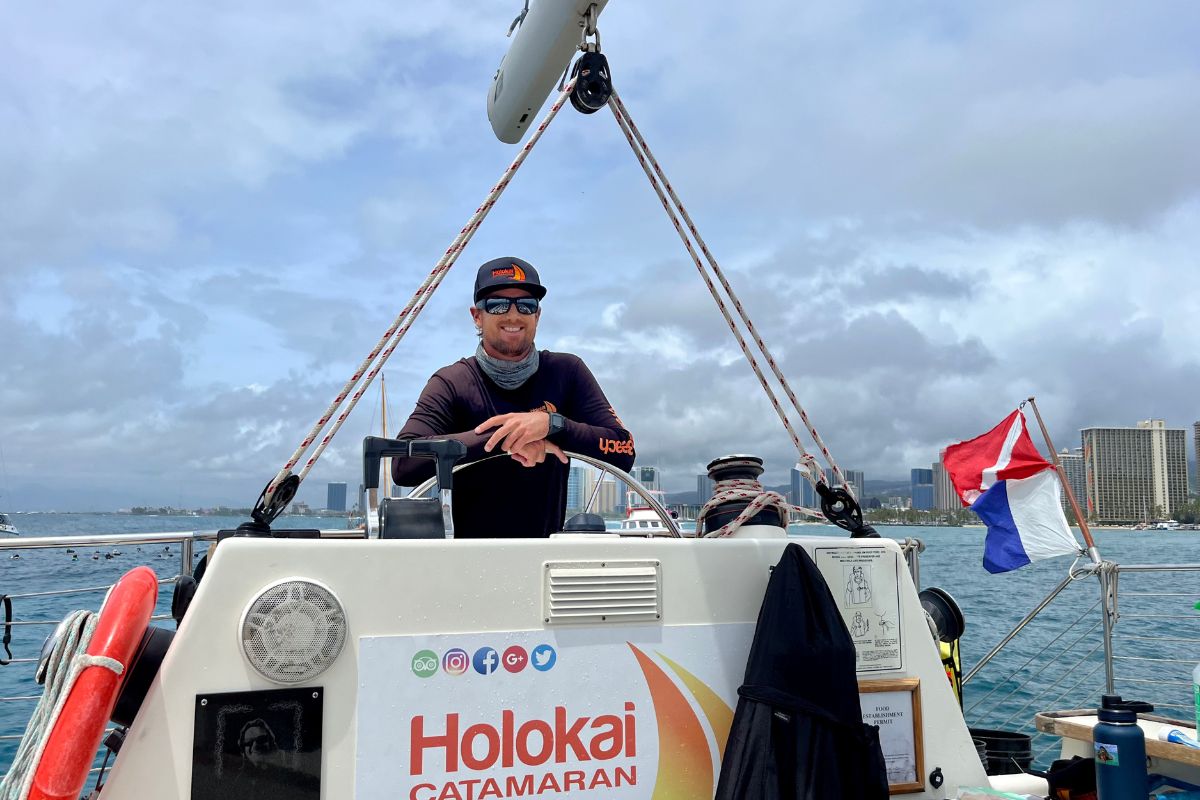
Capt. Ryan Gallagher.
Photo: Grace Maeda
Capt. Ryan’s first tip for novice snorkelers: Know your swimming abilities. “If anything, underestimate them. The ocean in Hawaiʻi is rough,” he says. Many snorkel tours require you to know how to swim. Many also equip snorkelers with floatation vests that must be worn in the water at all times. Those who aren’t strong swimmers are advised to stay close to the boat or a crew member in the water who will be keeping tabs on you. For snorkelers starting from the beach without a tour group, set realistic expectations about your swimming abilities. Don’t venture far from shore if you’re not a confident swimmer. Ocean conditions can change rapidly, making it difficult to swim back to the beach, even for strong swimmers.
2. Practice swimming in a pool
A calm pool is drastically different from the ocean—but if you’re uncomfortable in the water, practicing there can be helpful. And if you’ve brought your own equipment, Capt. Ryan suggests testing it in a pool before heading into the ocean. Getting accustomed to wearing a mask, breathing through a snorkel and kicking with fins beforehand means more time to enjoy your snorkeling adventure once it starts.
3. Before you jump in, do your research and talk to a lifeguard on the beach
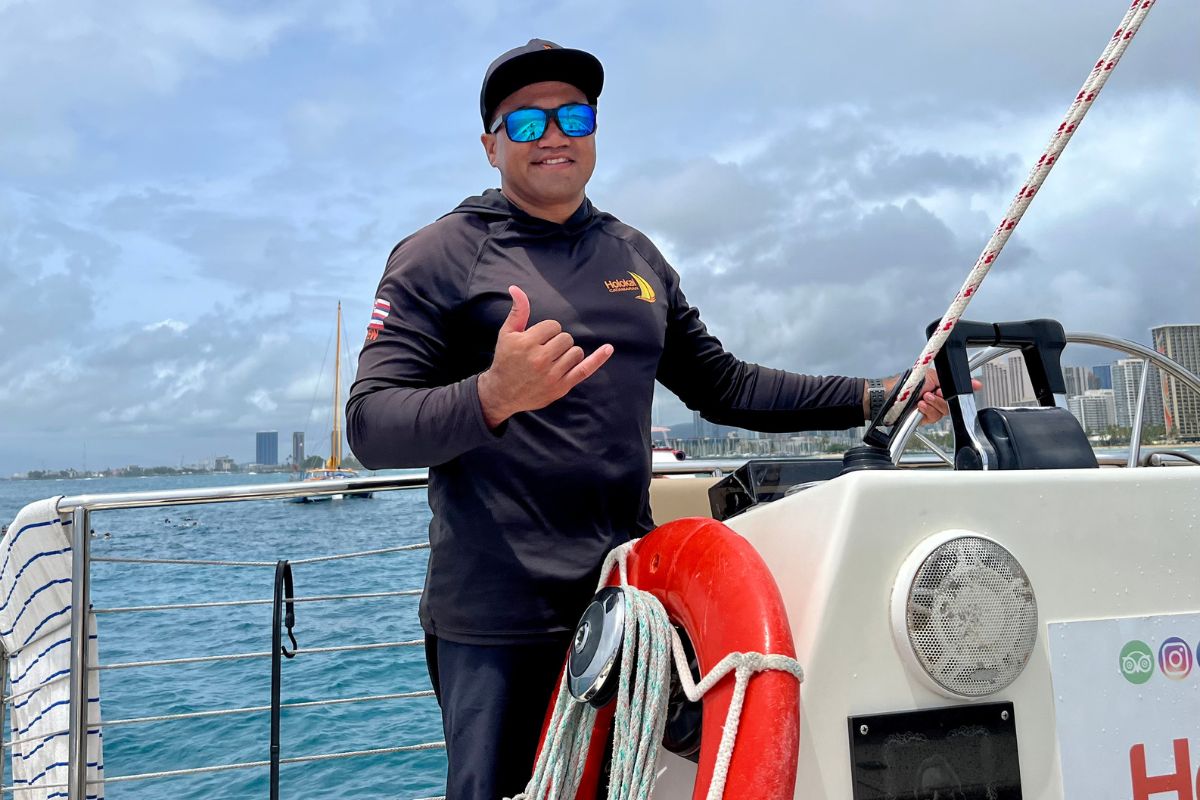
Uluwehi Keaunui is a crew member aboard the Holokai Catamaran and also works at the City and County of Honolulu’s Ocean Safety and Lifeguard Services.
Photo: Grace Maeda
Most things are done well when you prepare—and snorkeling is no exception. Research the areas you’ll be snorkeling in and read up on ocean conditions, even if you’ll be with a tour group, but especially if you plan to snorkel on your own. Capt. Ryan says the time of year greatly impacts currents and swells.
Uluwehi Keaunui, a crew member aboard the Holokai Catamaran who also works at the City and County of Honolulu’s Ocean Safety and Lifeguard Services, adds, “If there’s a lifeguard on duty at the beach, don’t be afraid to ask them about the conditions; they’re the ones who are on the beach day in and day out.” Lifeguards can inform you about any potential hazards like rip currents, dangerous reefs and shore breaks.
4. Bring the proper equipment
Preparation plays a part here too: Being ready with the proper gear is critical to a successful and enjoyable snorkeling experience. Most snorkel tours will provide you with a mask, snorkel, fins and even reef-safe sunscreen; just be sure to bring a hat and some sun protection of your own, just in case. Capt. Ryan suggests always using fins, which give swimmers and snorkelers a huge boost in the water.
5. Buddy up
Swimming in the ocean with a friend or a group is always a smart and safe option. More eyes can detect potential hazards and having friends nearby can provide help if needed. However, Keaunui notes, the buddy system only works if you have a buddy. So, if you’re snorkeling solo, which isn’t advised for novice snorkelers, make sure you tell someone on land. Together, set a time that you plan to check in by. If you haven’t checked in by then, that person can notify lifeguards or ocean safety crews.
6. Pop up periodically
Once you’ve mastered breathing through the snorkel tube, it’s easy to be transfixed by the underwater world beneath you. However, whether you’re with a tour boat or snorkeling off the beach, Keaunui recommends that snorkelers frequently pop their heads above the water to ensure they’re not floating away from the group or the beach. Taking note of landmarks can help ensure you don’t drift off course.
7. Don’t touch anything and don’t harass the wildlife
The Holokai Catamaran crew strongly advise against touching, or destroying Hawaiʻi’s marine habitats. Coral reefs are fragile ecosystems that provide homes and nourishment to many native species. Also, don’t pester honu, heʻe (octopus), monk seals, dolphins or any marine creatures. Violators can be subject to hefty fines. From the ocean to the mountains, respect Hawaiʻi’s wildlife and environment.
